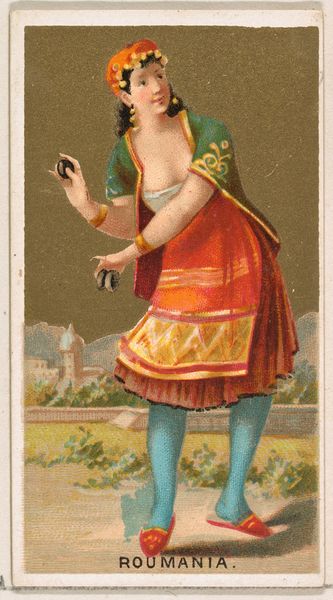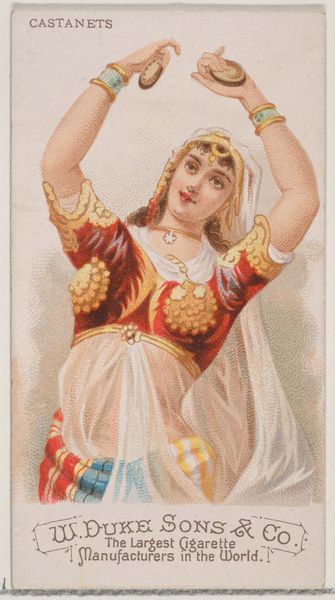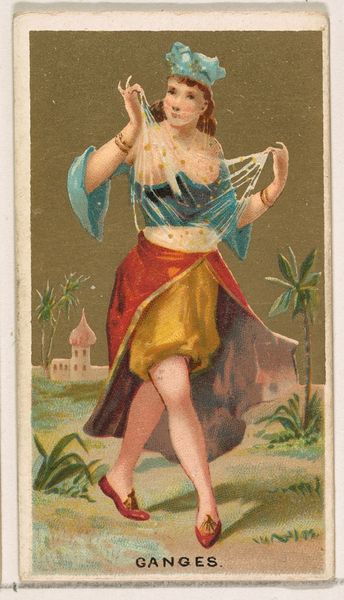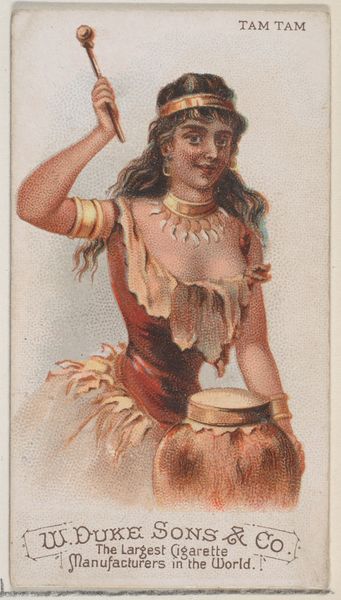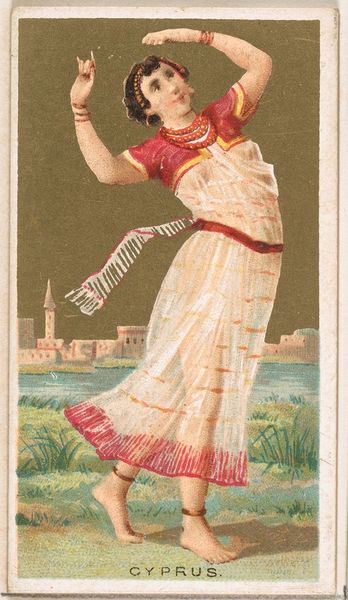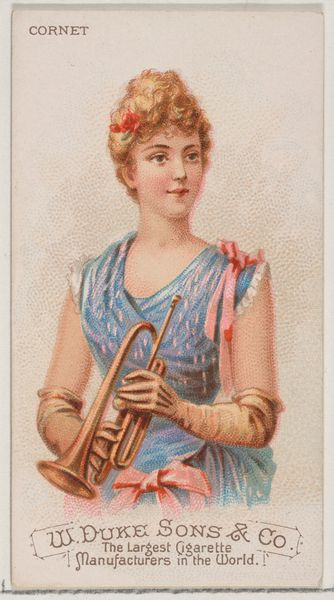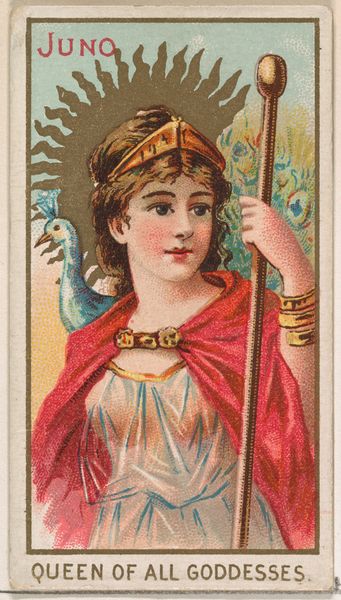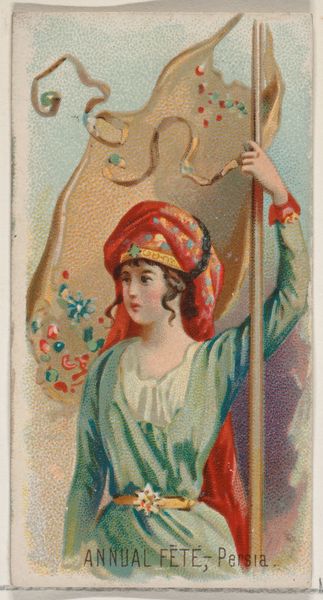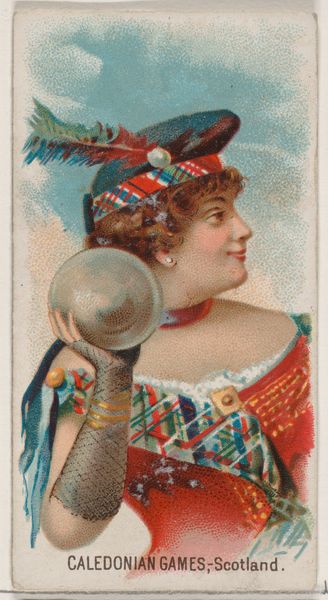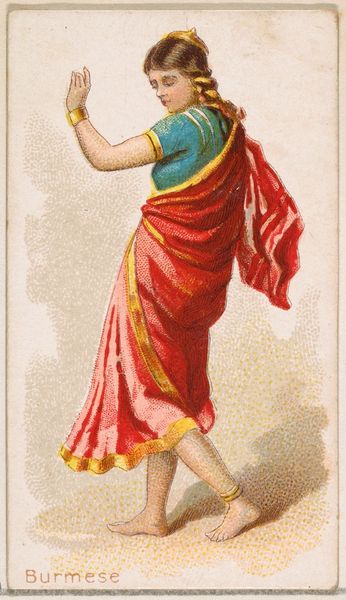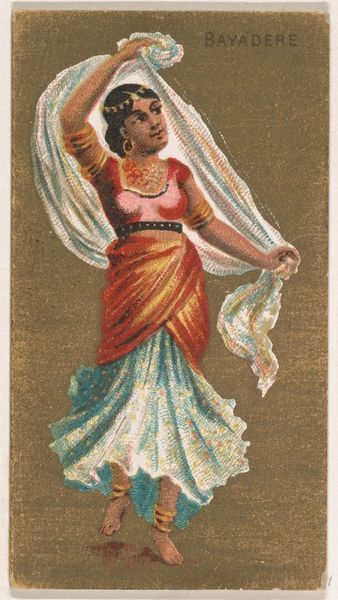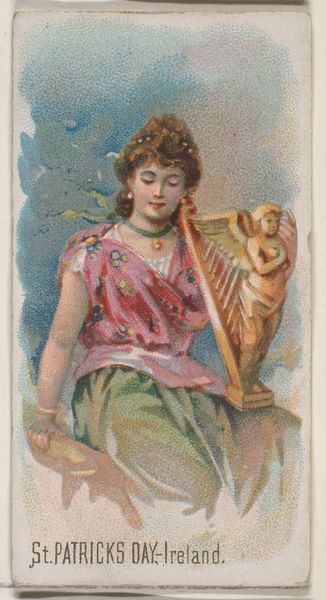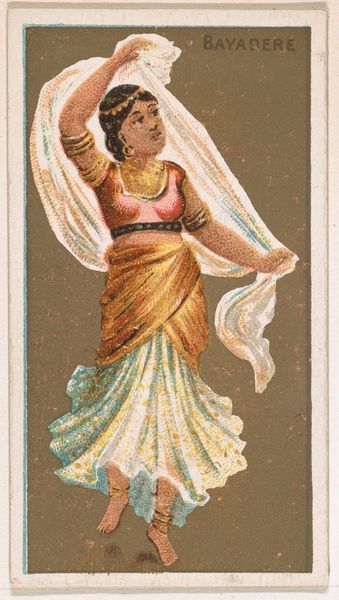
Egyptian Harp, from the Musical Instruments series (N82) for Duke brand cigarettes 1888
0:00
0:00
drawing, coloured-pencil, print
#
portrait
#
drawing
#
coloured-pencil
# print
#
oil painting
#
coloured pencil
#
orientalism
#
history-painting
#
academic-art
Dimensions: Sheet: 2 3/4 x 1 1/2 in. (7 x 3.8 cm)
Copyright: Public Domain
This is a chromolithograph trade card, part of the Musical Instruments series by W. Duke, Sons & Co., likely dating from the late 19th century. The visual field is dominated by a woman playing an elaborate harp. Note the striking contrast in colors, with cool blues and pinks balanced against the warm golds of her jewelry and the harp. The linear form of the instrument creates vertical emphasis, counterpointed by the curves of the woman’s figure and the harp’s ornate carvings. In semiotic terms, the harp signifies not just music but perhaps also exoticism, linking the brand to a sense of refined, worldly pleasure. Yet, we might also consider this image through a poststructuralist lens, questioning the stability of such associations. Is this representation of Egyptian culture authentic, or does it serve merely as a superficial signifier within a larger capitalist structure? It is this tension between aesthetic appeal and underlying cultural narratives that makes this small trade card a fascinating artifact.
Comments
No comments
Be the first to comment and join the conversation on the ultimate creative platform.
